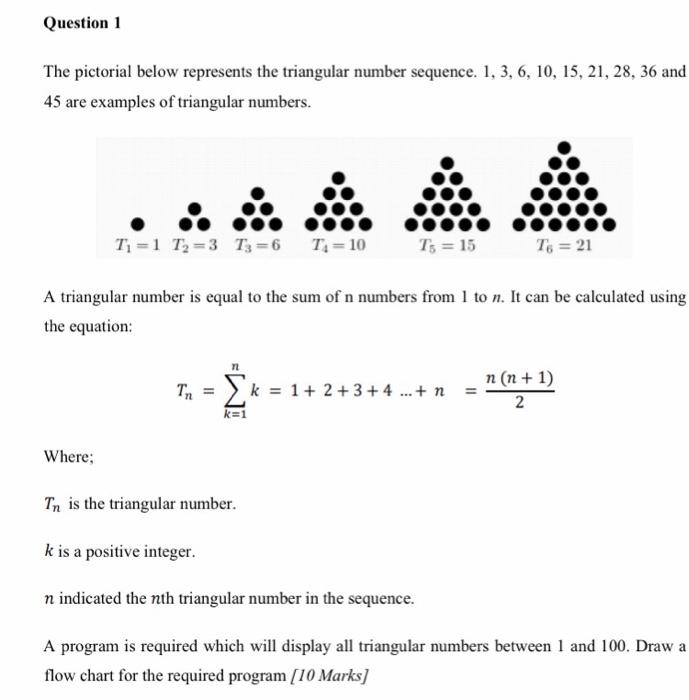Answered step by step
Verified Expert Solution
Question
1 Approved Answer
Question 1 The pictorial below represents the triangular number sequence. 1, 3, 6, 10, 15, 21, 28, 36 and 45 are examples of triangular numbers.



Step by Step Solution
There are 3 Steps involved in it
Step: 1

Get Instant Access to Expert-Tailored Solutions
See step-by-step solutions with expert insights and AI powered tools for academic success
Step: 2

Step: 3

Ace Your Homework with AI
Get the answers you need in no time with our AI-driven, step-by-step assistance
Get Started


